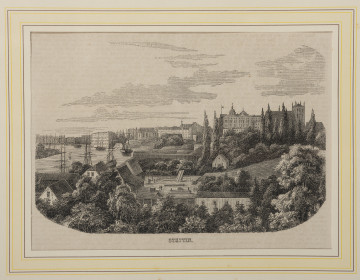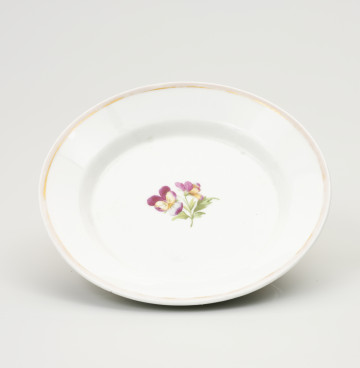
Stettin | Szczecin
1890 — 1910
National Museum in Szczecin
Part of the collection: Szczecin souvenirs
For centuries, porcelain wares marked their owners’ status and wealth. The Chinese were the first in the world to start producing porcelain on a larger scale around the 7th century. It reached Europe in the Middle Ages thanks to the famous Venetian traveller Marco Polo, however, it took until the 18th century before it became popular. Many porcelain factories were established at that time, including the Porzellan-Manufaktur von F. Schumann & Sohn. The factory focused on the production of cups and table services, competing with other factories, inclduing the Royal Porcelain Factory in Berlin, which used an outdated classical design. In 1846 the Schumann factory became the largest porcelain producer in Germany. In the wake of its popularity, the company started to establish a network of branches, including one in the capital of the former Pomeranian Province - Szczecin. The company wanted to attract local buyers with products featuring images of places characteristic for the city. One of the examples is a plate with a view of the Pomeranian Dukes' Castle. Porzellan-Manufaktur von F. Schumann & Sohn shut down in 1913, but not before leaving a permanent mark on the history of German porcelain.
Anna Lew-Machniak
Author / creator
Dimensions
cały obiekt: height: 2,5 cm
Object type
vessel for serving food
Creation time / dating
Creation / finding place
Identification number
Location / status

1890 — 1910
National Museum in Szczecin

1913 — 1930
National Museum in Szczecin

1923 — 1945
National Museum in Szczecin
DISCOVER this TOPIC
Museum of King Jan III's Palace at Wilanów
DISCOVER this PATH
Educational path